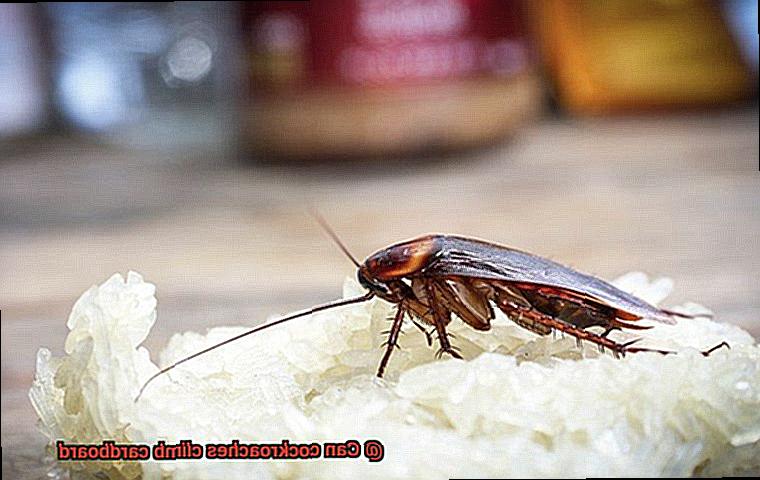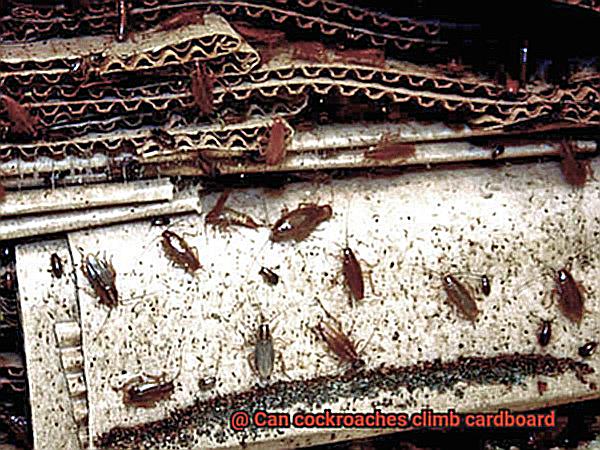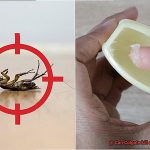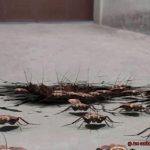Are you one of those people who gets the heebie-jeebies at the mere thought of cockroaches? These creepy crawlies are notorious for their climbing skills, scurrying up walls, cabinets, and even ceilings with ease. But what about cardboard? Can cockroaches climb that too?
If you’ve ever stored cardboard boxes in your basement, you may have caught a glimpse of a cockroach or two scurrying in and out of them. It’s widely believed that these pests can’t climb smooth surfaces like cardboard. But is this really true?
In this blog post, we’ll take a deep dive into the fascinating world of cockroach behavior to find out if they can indeed climb cardboard. We’ll explore their physical capabilities, their preference for climbing surfaces, and the science behind their innate ability to climb.
But that’s not all – we’ll also share some tips and tricks to keep your home free from these unwanted guests and prevent infestations. Whether you’re a curious critter-lover or a squeamish homeowner, this post is guaranteed to enlighten you and may even change the way you think about these elusive insects. So get ready to discover once and for all if cockroaches truly have what it takes to conquer cardboard.
What Makes Cockroaches Good Climbers?
Contents
Cockroaches may be unwanted guests in your home, but there’s no denying their impressive climbing abilities. What exactly makes them such skillful climbers? Let’s take a closer look at the science behind their amazing talent.

Firstly, cockroaches have specialized foot pads covered in tiny hairs called setae. These hairs increase the surface area of the pads, giving them a stronger grip on surfaces. This means that even on smooth surfaces like glass or plastic, cockroaches can climb with ease without slipping or falling.
But that’s not all. Cockroaches are also able to adjust the angle of their footpads to match the surface they are climbing on. This means that they can maintain a strong grip even on surfaces that are not completely flat. Whether it’s walls or ceilings, cockroaches can climb them all thanks to their adaptable footpads.

The flexibility of their bodies also plays a role in their climbing abilities. Their flat and flexible bodies allow them to squeeze into tight spaces and navigate through small gaps. This means that they can climb up narrow crevices or crawl through small openings in search of food or shelter.
So, if you’re trying to keep cockroaches out of your home using cardboard traps or barriers, you may want to reconsider. While cardboard may trap cockroaches in one location, it won’t prevent them from climbing up and over the barrier to reach other areas of your home.
Can Cockroaches Climb Cardboard?
These creepy critters can scale almost any surface with ease, including walls, ceilings, and even cardboard. That’s right, their specialized feet have tiny hooks called setae, which enable them to grip onto rough surfaces like cardboard, wood, and fabric.
But just because they can climb cardboard doesn’t mean they’re attracted to it. Cockroaches are drawn to food sources and hiding places such as cracks and crevices. While they may use cardboard as a pathway to get to these areas, they won’t stay on it for long periods.
If you’re dealing with a cockroach infestation in your home or business, it’s important to focus on eliminating their food sources and hiding places rather than the surfaces they climb. Sealing cracks and crevices, promptly cleaning up spills and crumbs, and using insecticides or traps can help control their population.
How Do Cockroaches Climb Cardboard?
Cockroaches are notorious for their climbing skills, and they can scale almost any surface, including cardboard. But how do they do it? The answer lies in their feet.
Cockroaches have tiny suction cups on their feet called setae. These sticky pads allow them to climb vertical surfaces without slipping or falling. When it comes to cardboard, the rough texture provides an ideal grip for the setae, allowing cockroaches to crawl up and down with ease.
But it’s not just their setae that make them great climbers. Cockroaches also have a flexible exoskeleton that enables them to adjust the angle of their body while climbing. This allows them to navigate over bumps and crevices in the cardboard and squeeze through tight spaces.
Interestingly, some species of cockroaches are better climbers than others. German cockroaches, for example, have longer and more flexible setae than other species. This makes them better at climbing smooth surfaces such as glass and plastic.
What Other Surfaces Can Cockroaches Climb?
Cockroaches are the ultimate climbers, able to scale almost any surface with ease. These little critters can climb on a variety of surfaces, including wood, tiles and ceramics, glass, and even fabrics.
Wooden surfaces provide an ideal texture for cockroaches to grip onto with their tarsal pads. This means that they can easily crawl on wooden furniture, floors, and walls without any difficulty. Tiles and ceramics are also a breeze for cockroaches to navigate due to their smooth surfaces. Similarly, glass surfaces pose no challenge for these insects, thanks to their extraordinary adhesive footpads.
Cockroaches can even climb on fabrics and textiles such as curtains, carpets, and clothing. They can easily crawl through the fibers of carpets or climb up curtains by using their tarsal pads to grip onto the fabric’s surface.
To limit their presence in your home, it’s crucial to keep surfaces clean and eliminate any potential food sources for cockroaches. These insects are experts at finding food and water sources, so keeping your living space tidy will help keep them at bay.
Are There Any Other Considerations to Make When Dealing with Cockroach Infestations?
Cockroaches are one of the most resilient pests out there, surviving in a wide range of environments, including cardboard boxes. Even if the surface is smooth, they can still navigate their way through small openings and crevices. So, when dealing with an infestation, it’s crucial to thoroughly inspect all areas of your home.
However, it’s not just their persistence that makes them a problem. Cockroaches are known carriers of bacteria and disease, making it critical to take swift action to prevent the spread of illness. The longer you wait, the larger the problem can become, which is why seeking professional help is the best course of action.
In addition to seeking professional help, identifying and eliminating potential food sources for cockroaches is also essential. Crumbs or spilled food, pet food left out overnight, and grease buildup in kitchen appliances are all potential attractants. Removing these sources of food can make your home less attractive to cockroaches.
It’s worth noting that some DIY methods for dealing with cockroach infestations may not be effective or even dangerous. Using pesticides without proper safety precautions could harm pets or family members. So, it’s always best to consult with a professional pest control service for the most effective and safe approach to dealing with cockroaches.
H_HxwLHX8mc” >
Conclusion
To sum up, cockroaches are known for their impressive climbing skills and can climb almost any surface with ease. Many people believe that they cannot climb smooth surfaces like cardboard, but this is not entirely true. Cockroaches have special foot pads covered in tiny hairs called setae, which increase the surface area of the pads and give them a stronger grip on surfaces. This means that even on smooth surfaces like cardboard or plastic, cockroaches can climb with ease without slipping or falling.
However, it’s important to note that just because they can climb cardboard doesn’t mean they’re attracted to it. Cockroaches are drawn to food sources and hiding places such as cracks and crevices rather than the surfaces they climb. To control their population, sealing cracks and crevices, promptly cleaning up spills and crumbs, and using insecticides or traps can be helpful.
Cockroaches are also very adaptable climbers due to their ability to adjust the angle of their footpads to match the surface they are climbing on. They can crawl on a variety of surfaces including wood, tiles and ceramics, glass, fabrics such as curtains and carpets.
It’s essential to take swift action when dealing with a cockroach infestation since these pests are known carriers of bacteria and disease. Seeking professional help is recommended along with identifying and eliminating potential food sources for cockroaches.






